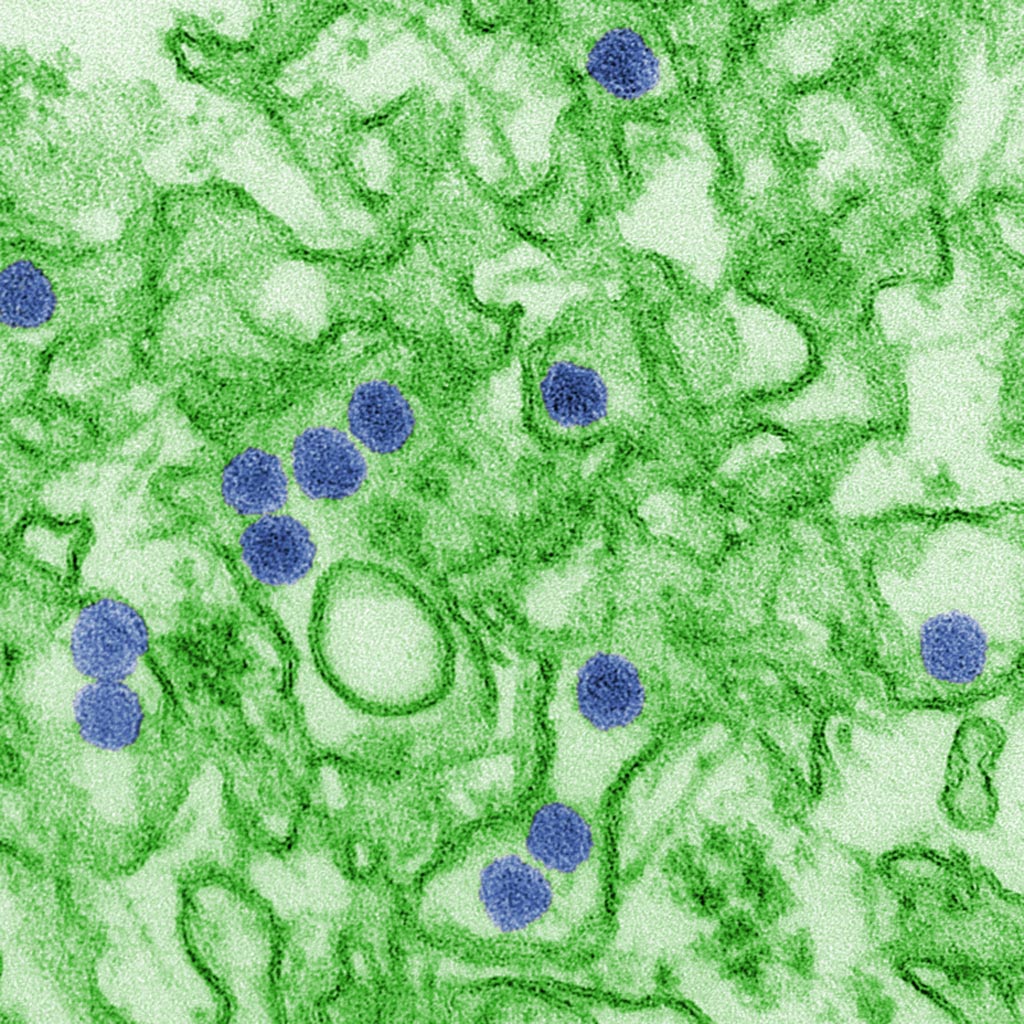DNA-Based Vaccine Shown Safe and Effective
By LabMedica International staff writers
Posted on 16 Oct 2017
A team of vaccine developers used an advanced electroporation method to deliver and evaluate a new generation DNA-based vaccine designed to protect against Zika virus (ZIKV) infection.Posted on 16 Oct 2017
Investigators at the University of Pennsylvania (Philadelphia, USA), Inovio Pharmaceuticals (Plymouth Meeting, PA, USA), GeneOne Life Science (Seoul, Korea), and The Wistar Institute (Philadelphia, PA, USA) collaborated in this effort. They used Inovio's proprietary electroporation device, Cellectra, to vaccinate two groups of 20 participants with two different doses of GeneOne Life Science's GLS-5700 DNA-based vaccine candidate.

Image: A digitally colorized transmission electron micrograph (TEM) of Zika (Photo courtesy of the CDC).
Electroporation uses controlled, millisecond electrical pulses to create temporary pores in the cell membrane and allow dramatic cellular uptake of a synthetic DNA immunotherapy previously injected into muscle or skin. The cellular machinery then uses the DNA’s instructions to produce one or more proteins associated with the targeted disease. These foreign protein(s), or antigen(s), mimic the presence of an actual pathogen and induce an immune response to provide future protection against the pathogen or eliminate cells infected with an infectious disease or cancer.
In the current study, the GLS-5700 DNA vaccine, which encodes the ZIKV pre-membrane and envelope proteins, was administered by electroporation to two groups of 20 participants each. The participants received either one milligram or two milligrams of vaccine at baseline, four weeks, and 12 weeks.
Results published in the October 4, 2017, online edition of the New England Journal of Medicine revealed that by two weeks after the final dose all study participants had developed Zika-specific antibodies and 80% had produced significant neutralizing antibodies against the virus. Furthermore, serum from the study participants was able to protect immunocompromised mice from developing the disease after infection with Zika virus, indicating that the vaccine-induced antibodies could prevent infection in vivo.
By the 14-week point, no serious adverse events had been reported, although local reactions at the vaccination site (e.g., injection-site pain, redness, swelling, and itching) occurred in approximately 50% of the participants.
"Synthetic DNA vaccines are an ideal approach for emerging infectious diseases like Zika," said contributing author Dr. David B. Weiner, executive vice president of The Wistar Institute. "This new generation of DNA vaccines can be designed and manufactured rapidly, they appear to be highly predictable for the generation of immunity in humans, have significant conceptual safety advantages, and they are more stable than most traditional vaccines, making them exceptionally practical to distribute during outbreaks, especially in regions where resources are limited and we need to be able to respond quickly to curb an emerging epidemic."
Related Links:
University of Pennsylvania
Inovio Pharmaceuticals
GeneOne Life Science
The Wistar Institute













